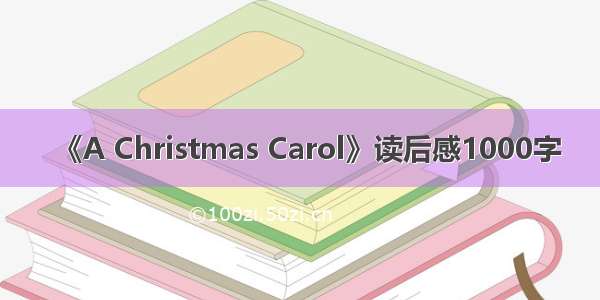
《圣诞颂歌》是由罗伯特·泽米吉斯执导,金·凯瑞、加里·奥德曼、科林·费斯主演的奇幻家庭电影,于11月6日在美国上映。该片根据查尔斯·狄更斯经典短篇小说《圣诞颂歌》(A Christmas Carol, 1843)改编,讲述了刻薄冷酷的埃比尼泽·斯克鲁奇在圣诞节遭遇了各种惊奇事件,让他从一个守财奴转变为慈善家的故事。
性情刻薄、冷酷的守财奴埃比尼泽·斯克鲁奇面对温暖的圣诞节,表现出讨厌周遭的一切庆祝活动。圣诞临近,他仍在想尽办法去剥削他那忠诚老实的雇员鲍勃·克莱切特,以及他的侄子弗莱德。埃比尼泽本来就无心享受假期,只想像平常那样独自一个人待在家里。埃比尼泽梦见刚逝去的合伙人约瑟夫·马利的鬼魂,约瑟夫告诉埃比尼泽,在他之后还会有三个幽灵来拜访他。很快,这三个分别被称为圣诞节的"过去之灵"、"现在之灵"和"未来之灵"的鬼魂就找到了他,唤醒了他人性的另一面。
“过去之灵”看起来就像是一团耀眼的火焰,带着埃比尼泽一起回到了过去的一些重要时刻,让埃比尼泽看到了年轻时的自己,给埃比尼泽带来非常深刻的影响(人之初,性本善;要不忘初心啊)。在孤单寂寞的童年生活中,他的姐姐对他倍加关爱的情景,以及他当学徒时,仁慈善良的老板菲茨威格在圣诞之夜和大家一起开心跳舞,款待员工。他的心开始被软化,后悔自己对待雇员的态度,也对自己从一个贫穷却快乐的年轻人变成一个富有却失去亲情的老板感到懊悔。"现在之灵"是穿着长袍的快乐的巨人,他为了展示埃比尼泽现在过的是一种什么样的生活,他们一起去了员工鲍勃的家里,目睹了困境中的鲍勃一家人的圣诞聚会。鲍勃是一个拿着可怜薪水的小职员,没有圣诞礼物,没有火鸡,可每位家人的脸上都洋溢着幸福的微笑。"未来之灵"看起来更像是一片幻像,将埃比尼泽带到了未来。他看到在他衰老之后病卧在床, 连圣诞节也没有亲人朋友来看望的孤苦景象。当埃比尼泽离开人世的时候,身边却没有人露出悲伤的神情,只是在讨论如何瓜分他的财产。埃比尼泽·斯克鲁奇开始重新思考生活的意义,才发现原来施与比接受更快乐。这一切渐渐唤醒他人性的另一面——同情、仁慈、爱心及喜悦。瞬间,他的自私及冷酷迅速崩塌,消失殆尽,从此变成了一个乐善好施的人。于是在鬼魂拜访过的第二天早上,也就是圣诞节的早晨,尽管雇员鲍勃上班迟到了,他不但没生气的,还对鲍勃说:“我的好伙计,祝你圣诞快乐!我要给你加薪,而且还要尽力去帮助你贫困的家庭。快点把火生着,再去买一个煤筐。”接着他又买了一只特别大的火鸡叫人给鲍勃家送去。随后,他第一次去拜访了自己的外甥,在街上逢人便招呼道“圣诞快乐”,而人们也都报以和善的微笑。斯克鲁奇平生第一次感到了真正的快乐。“他的心在笑”,从乐善好施中他真正体会到了生命的乐趣。
该片是迪士尼公司第一部以IMAX 3D方式发行的影片。3D技术、动态捕捉技术和IMAX格式等元素,让该片成为了一部技术派的电影。该片有着极为丰富的镜头表现力,大动态的画面呈现也颇多,在3D观看模式中有着很强烈的视觉冲击该片是导演罗伯特·泽米吉斯继电影《极地特快》和《贝奥武夫》后,第三次使用"表演捕捉"技术。3D效果下四周漂浮的鬼魂和过山车一般的特效带来持久的刺激。英国伦敦的牛津街和摄政街在的圣诞举行以狄更斯为主题的纪念活动,为了配合当地的活动,该片的首映式特别安排在了伦敦。金·凯瑞为演好角色,观察了很多老年人的行动的姿势,归纳出来一套特别的表演方法。作家狄更斯:
狄更斯(1812—1870),继莎士比亚之后对于世界文学影响最大的作家之一。其高超的、富有节奏感的叙事方式,生动记录社会现实(英国维多利亚时代)的能力以及作品中积极倡导的人道主义精神,都是狄更斯的标志性特色。代表作包括《匹克威克外传》(1837)、《雾都孤儿》(又名《奥列弗·特维斯特》1838)、《老古玩店》(1841)、《马丁·瞿述伟》(1844)、《大卫·科波菲尔》(1850)、《艰难时世》(1854)、《双城记》(1859)、《远大前程》(1861)等。
从1843年到1848年间,狄更斯几乎在每年圣诞节都发表一个与节日有关的中篇小说,《圣诞颂歌》(A Christmas Carol ),《钟声》(The Chimes ) 和《炉边的窸蟀》(The Cricket on the Hearth)。被称为狄更斯的圣诞三部曲。其中《圣诞颂歌》具有极其特殊的地位。在《圣诞颂歌》出版的维多利亚时代,圣诞节并不为很多英国人所知。然而,书中的情节和人物在西方家喻户晓后,故事中的一些情节成了圣诞节的约定风俗,诸如家庭团聚、互换礼物、圣诞餐饮。一百多年来积聚的“人气”使其成为狄更斯的小说中最深入人心的一部。文学评论家认为,《圣诞颂歌》的发表是狄更斯的创作生涯中的重大转折点;而社会学家则相信,这部作品深刻地改变了现代圣诞节在西方世界的地位和价值,甚至“圣诞快乐”(Merry Christmas!)的说法也是由此而得以流行的,狄更斯本人也因此被称为“发明圣诞节”的人。
狄更斯不工诗,不谈玄,只是把小说的根基简简单单、扎扎实实地植于人性的大悲大喜、大是大非中:对善的无尽潜力始终抱定信心,对恶的危害也了然于胸。狄更斯的作品是呈现给大众的。
Plot
In 1843, on Christmas Eve, Ebenezer Scrooge, a miserly old moneylender at a London counting house, does not share the merriment of Christmas. He declines his cheerful nephew Fred's invitation to a Christmas dinner party, and rejects two gentlemen's offer to collect money for charity. His loyal employee Bob Cratchit asks Scrooge to allow him to have a day off on Christmas Day to spend time with his family, to which Scrooge reluctantly agrees before leaving. In his house, Scrooge encounters the ghost of his deceased business partner Jacob Marley, who warns him to repent his wicked ways or he will be condemned in the afterlife like he was, carrying heavy chains forged from his own greediness. Jacob informs Scrooge that he will be haunted by three spirits, who will guide him out of his misery.
First, Scrooge is visited by the candle-like Ghost of Christmas Past, who takes him back in time to his childhood and early adult life. They visit Scrooge's boarding school and Scrooge sees his sister Fan, who became the mother of Fred. Scrooge later begins a successful career in business and money lending as an employee under Fezziwig, and he becomes engaged to a woman named Belle. However, the Ghost shows Scrooge how Belle left him when he became obsessed with wealth. A devastated Scrooge extinguishes the spirit with its candle snuffer cap.
Next, Scrooge meets the merry Ghost of Christmas Present, who shows him the joys and wonder of Christmas Day. Scrooge and the Ghost visit Bob's house, learning his family is content with their small dinner. All the while, Scrooge starts to take pity on Bob's ill son Tiny Tim. The Ghost abruptly ages, commenting that Tiny Tim will likely not survive until next Christmas. The Ghost warns Scrooge about the evils of "Ignorance" and "Want"; Big Ben begins tolling midnight as "Ignorance" and "Want" manifest themselves before Scrooge as two wretched children who grow into violent, insane individuals, leaving the spirit withering away, dying at length when midnight strikes.
Finally, the Ghost of Christmas Yet to Come arrives, appearing as a dark shadow, and takes Scrooge into the future. He witnesses a group of businessmen discussing the death of an unnamed colleague; saying they would only attend the funeral if lunch is provided; Scrooge recognizes his charwoman Mrs. Dilber selling the stolen possessions of the deceased. Shortly afterwards, Scrooge sees the aforementioned colleague's body on a bed, followed by a vision of a family who is relieved that he is dead, as they have more time to pay off their debt. The spirit transports Scrooge to Bob's residence, discovering that Tiny Tim has died. Scrooge is then escorted to a cemetery, where the Ghost points out his own grave, revealing Scrooge as the man who died. Scrooge decides to change his ways just as the Ghost forces him to fall into his empty coffin lying in a deep grave that sits above the fires of Hell.
Waking up in his own room on Christmas Day, with love and happiness in his heart, a gleeful Scrooge decides to surprise Bob's family with a turkey dinner, and ventures out with the charity workers and the citizens of London to spread happiness in the city, and later attends his nephew's annual Christmas dinner, where he is warmly welcomed. The following day, he gives Cratchit a raise and becomes a father figure to Tiny Tim, who escapes death. A changed man, Scrooge now treats everyone with kindness, generosity, and compassion; he now embodies the spirit of Christmas.
狄更斯小说A Christmas Carol介绍:
A Christmas Carol. In Prose. Being a Ghost Story of Christmas, commonly known as A Christmas Carol, is a novella by Charles Dickens, first published in London by Chapman & Hall in 1843 and illustrated by John Leech. A Christmas Carol recounts the story of Ebenezer Scrooge, an elderly miser who is visited by the ghost of his former business partner Jacob Marley and the spirits of Christmas Past, Present and Yet to Come. After their visits, Scrooge is transformed into a kinder, gentler man.
Dickens wrote A Christmas Carol during a period when the British were exploring and re-evaluating past Christmas traditions, including carols and newer customs such as Christmas trees. He was influenced by the experiences of his own youth and by the Christmas stories of other authors including Washington Irving and Douglas Jerrold. Dickens had written three Christmas stories prior to the novella, and was inspired following a visit to the Field Lane Ragged School, one of several establishments for London's street children. The treatment of the poor and the ability of a selfish man to redeem himself by transforming into a more sympathetic character are the key themes of the story. There is discussion among academics as to whether this was a fully secular story, or if it is a Christian allegory.
Published on 19 December, the first edition sold out by Christmas Eve; by the end of 1844 thirteen editions had been released. Most critics reviewed the novella favourably. The story was illicitly copied in January 1844; Dickens took legal action against the publishers, who went bankrupt, further reducing Dickens's small profits from the publication. He went on to write four other Christmas stories in subsequent years. In 1849 he began public readings of the story which proved so successful he undertook 127 further performances until 1870, the year of his death. A Christmas Carol has never been out of print and has been translated into several languages; the story has been adapted many times for film, stage, opera and other media.
A Christmas Carol captured the zeitgeist of the mid-Victorian revival of the Christmas holiday. Dickens had acknowledged the influence of the modern Western observance of Christmas and later inspired several aspects of Christmas, including family gatherings, seasonal food and drink, dancing, games and a festive generosity of spirit.
The book is divided into five chapters, which Dickens titled "staves".
Stave one:
A Christmas Carol opens on a bleak, cold Christmas Eve in London, seven years after the death of Ebenezer Scrooge's business partner, Jacob Marley. Scrooge, an ageing miser, dislikes Christmas and refuses a dinner invitation from his nephew Fred—the son of Fan, Scrooge's dead sister. He turns away two men who seek a donation from him to provide food and heating for the poor and only grudgingly allows his overworked, underpaid clerk, Bob Cratchit, Christmas Day off with pay to conform to the social custom.
That night Scrooge is visited at home by Marley's ghost, who wanders the Earth entwined by heavy chains and money boxes forged during a lifetime of greed and selfishness. Marley tells Scrooge that he has a single chance to avoid the same fate: he will be visited by three spirits and must listen or be cursed to carry much heavier chains of his own.
Stave two:
The first spirit, the Ghost of Christmas Past, takes Scrooge to Christmas scenes of Scrooge's boyhood, reminding him of a time when he was more innocent. The scenes reveal Scrooge's lonely childhood at boarding school, his relationship with his beloved sister Fan, and a Christmas party hosted by his first employer, Mr Fezziwig, who treated him like a son. Scrooge's neglected fiancée Belle is shown ending their relationship, as she realises that he will never love her as much as he loves money. Finally, they visit a now-married Belle with her large, happy family on the Christmas Eve that Marley died. Scrooge, upset by hearing Belle's description of the man that he has become, demands that the ghost remove him from the house.
Stave three:
The second spirit, the Ghost of Christmas Present, takes Scrooge to a joyous market with people buying the makings of Christmas dinner and to celebrations of Christmas in a miner's cottage and in a lighthouse. Scrooge and the ghost also visit Fred's Christmas party. A major part of this stave is taken up with Bob Cratchit's family feast and introduces his youngest son, Tiny Tim, a happy boy who is seriously ill. The spirit informs Scrooge that Tiny Tim will die unless the course of events changes. Before disappearing, the spirit shows Scrooge two hideous, emaciated children named Ignorance and Want. He tells Scrooge to beware the former above all and mocks Scrooge's concern for their welfare.
Stave four:
Black and white drawing of Scrooge and Bob Cratchit having a drink in front of a large fire. The third spirit, the Ghost of Christmas Yet to Come, shows Scrooge a Christmas Day in the future. The silent ghost reveals scenes involving the death of a disliked man whose funeral is attended by local businessmen only on condition that lunch is provided. His charwoman, laundress and the local undertaker steal his possessions to sell to a fence. When he asks the spirit to show a single person who feels emotion over his death, he is only given the pleasure of a poor couple who rejoice that his death gives them more time to put their finances in order. When Scrooge asks to see tenderness connected with any death, the ghost shows him Bob Cratchit and his family mourning the death of Tiny Tim. The ghost then allows Scrooge to see a neglected grave, with a tombstone bearing Scrooge's name. Sobbing, Scrooge pledges to change his ways
Stave five:
Scrooge awakens on Christmas morning a changed man. He makes a large donation to the charity he rejected the day before, anonymously sends a large turkey to the Cratchit home for Christmas dinner and spends the afternoon with Fred's family. The following day he gives Cratchit an increase in pay and begins to become a father figure to Tiny Tim. From then on Scrooge treats everyone with kindness, generosity and compassion, embodying the spirit of Christmas.
Social influences:
Dickens was touched by the lot of poor children in the middle decades of the 19th century. In early 1843 he toured the Cornish tin mines, where he was angered by seeing children working in appalling conditions. The suffering he witnessed there was reinforced by a visit to the Field Lane Ragged School, one of several London schools set up for the education of the capital's half-starved, illiterate street children.
In February 1843 the Second Report of the Children's Employment Commission was published. It was a parliamentary report exposing the effects of the Industrial Revolution upon working class children. Horrified by what he read, Dickens planned to publish an inexpensive political pamphlet tentatively titled, An Appeal to the People of England, on behalf of the Poor Man's Child, but changed his mind, deferring the pamphlet's production until the end of the year. In March he wrote to Dr Southwood Smith, one of the four commissioners responsible for the Second Report, about his change in plans: "you will certainly feel that a Sledge hammer has come down with twenty times the force—twenty thousand times the force—I could exert by following out my first idea".
In a fundraising speech on 5 October 1843 at the Manchester Athenaeum, Dickens urged workers and employers to join together to combat ignorance with educational reform, and realised in the days following that the most effective way to reach the broadest segment of the population with his social concerns about poverty and injustice was to write a deeply felt Christmas narrative rather than polemical pamphlets and essays.















